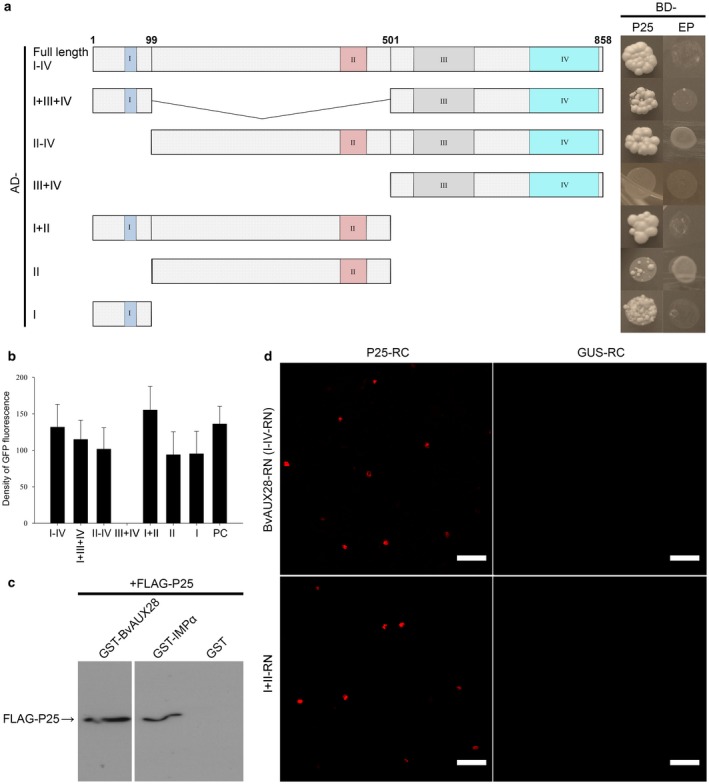Figure 5.

The Beet necrotic yellow vein virus (BNYVV) P25 protein interacts with BvAUX28. (a) Evaluation of P25 interaction with BvAUX28 in yeast and identification of the interacting domain of BvAUX28. Left: schematic diagram showing the BvAUX28 domains; conserved domains are represented by coloured rectangles. Right: yeast transformants were spotted onto a high‐stringency synthetic dropout (SD/‐Trp/‐Leu/‐His/‐Ade) medium. Empty BD vector/plasmid (EP) co‐transformed with corresponding AD constructs tested for transcriptional autoactivation (negative control). AD, activation domain. BD, binding domain. (b) Relative quantification of leucine‐driven green fluorescent protein (GFP) (mean total area density) in diploid yeast expressing the combination of P25 and BvAUX28 or its truncated derivatives as shown in (a). Bars represent means ± standard error of the mean. (c) In vitro pull‐down assay to confirm P25 interaction with BvAUX28. FLAG epitope‐tagged P25 was incubated with glutathione‐S‐transferase (GST)‐tagged BvAUX28, GST‐tagged OsIMPα (importin α from rice) or with GST tag. GST pull‐down products were visualized by immunoblotting with anti‐P25 antiserum. (d) Bimolecular fluorescence complementation (BiFC) conformation of the BNYVV P25 and BvAUX28 interaction. P25‐RC and BvAUX28‐RN (or I+II‐RN) were co‐expressed in Nicotiana benthamiana leaf epidermal cells via agroinfiltration. Co‐expression of GUS‐RC and BvAUX28‐RN or I+II‐RN was used as negative control. Images were taken at 4 days post‐inoculation (dpi). Scale bars, 50 μm.
